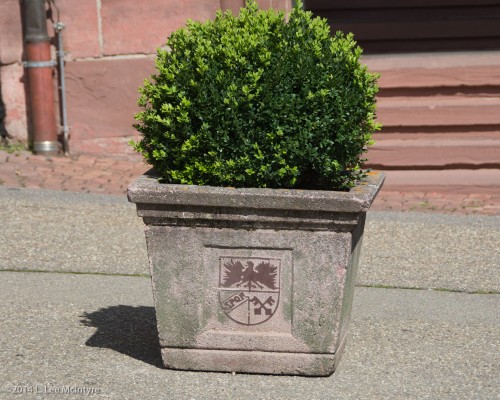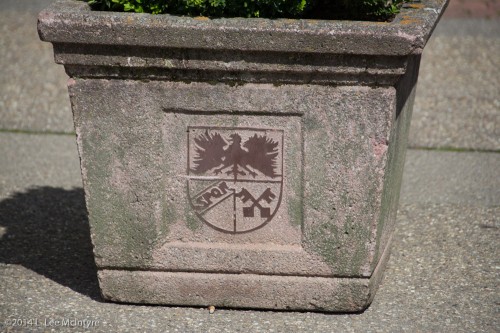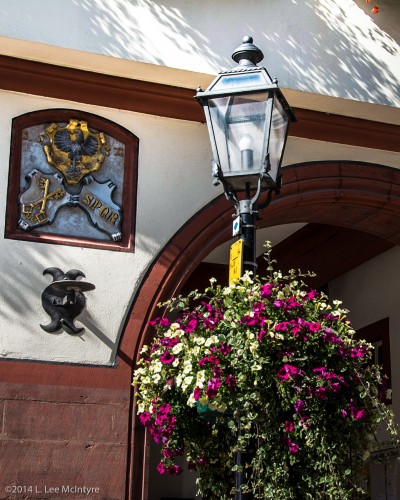Today on Monday Mysteries we find the reason for a remnant of ancient Rome in the middle of medieval Germany.
That day we went with friends to the cafe with the Olgabretzel, Chris and I were visiting a small town near Tübingen. The first intriguing issue for me with the town was its name: Weil der Stadt. In modern German, weil typically means “because”. Since Stadt, which means city, is a feminine noun, so “the city” would be die Stadt. The der instead of die indicates that we need to read this using the dative or genitive case. That’s a long way of saying that when I first heard the name of the town, I mistakenly thought that it was called “Because of the city”. Which made no sense.
However, according to Wikipedia the town’s name was originally spelled Wile, which is etymologically connected to the word meaning “estate or manor” (think “villa”). In Germany Wile came to be used to mean “small town”; spelling changes later turned it into Weil. The “der Stadt” part was appended to the name later when trying to distinguish which town named Weil was being referred to in documents over the centuries.
Or something like that. I’m not sure that makes a lot more sense than thinking it was called “Because of the city”.
But I’ve digressed, as that wasn’t the primary mystery I wanted to talk about today. No, a bigger mystery in Weil der Stadt was seeing what was on the city’s coat of arms, which were stamped on a planter next to a fountain in the main town square:
You can click on the photo to open it larger in a new window. Did you spot that down on the left side of that shield are the letters SPQR? That’s the acronym for the Ancient Roman motto Senatus Populusque Romanus, which loosely translates to “the Senate and the People of Rome.”
Hmm — hang on. An ancient Roman slogan on a German city’s coat of arms? My admittedly hazy recollection of ancient Roman history I learned in Latin class in high school would suggest that the German populace did not exactly have friendly relations with the ancient Romans. At least, it’s certainly not all that common to find SPQR on a typical medieval German coat of arms, and Weil der Stadt really looks like a very typical medieval German town.
So our friend B— went in and asked a guy at a museum in town what was going on, and it turned out that there was a fairly straightforward answer. Apparently a Roman legion marched through the area way back when, and stayed at least long enough to establish a settlement on this spot. So the town traces its roots back to those Roman days. SPQR on the city’s crest celebrates the fact that the area has been continuously settled since Roman times. Mystery solved.
Except … there is one remaining mystery about the Weil der Stadt coat of arms that I didn’t notice until after the museum closed. First, let’s just take another look at that planter:
In the Wikipedia article about the town, as well as on the official tourism page for the town, the SPQR is in the bottom left quadrant of the shield, as it is on this planter.
The planter is positioned next to the fountain in the following photo, and in front of the building that’s to the left of the figure/fountain. That’s the Weil der Stadt city hall:
You might not be surprised to learn that the city’s coat of arms is emblazoned on the side of that city hall building. However, it might not look like you’d expect:
Yup. The SPQR is in the wrong spot in the shield. How did that happen?
The answer to that mystery, though, will have to wait for us to pay a future visit to Weil der Stadt.





Those Romans did roam didn’t they.
While you are checking out the SPQR, how about getting an explanation for the crossed keys of the Papal Coat-of-Arms in the other quadrant. Quite a coat-ofarms for a tiny kuhdorf.